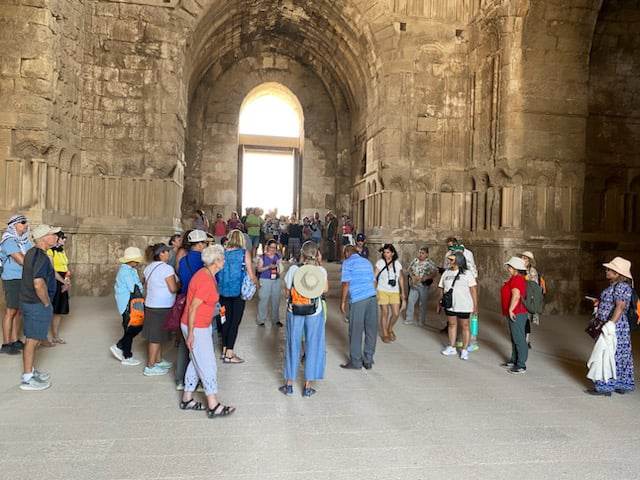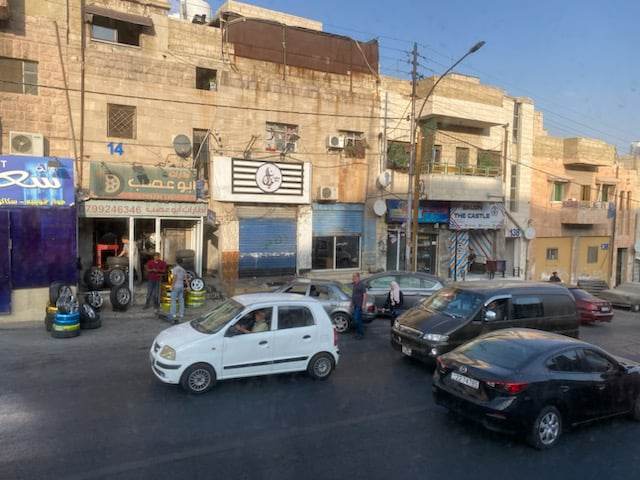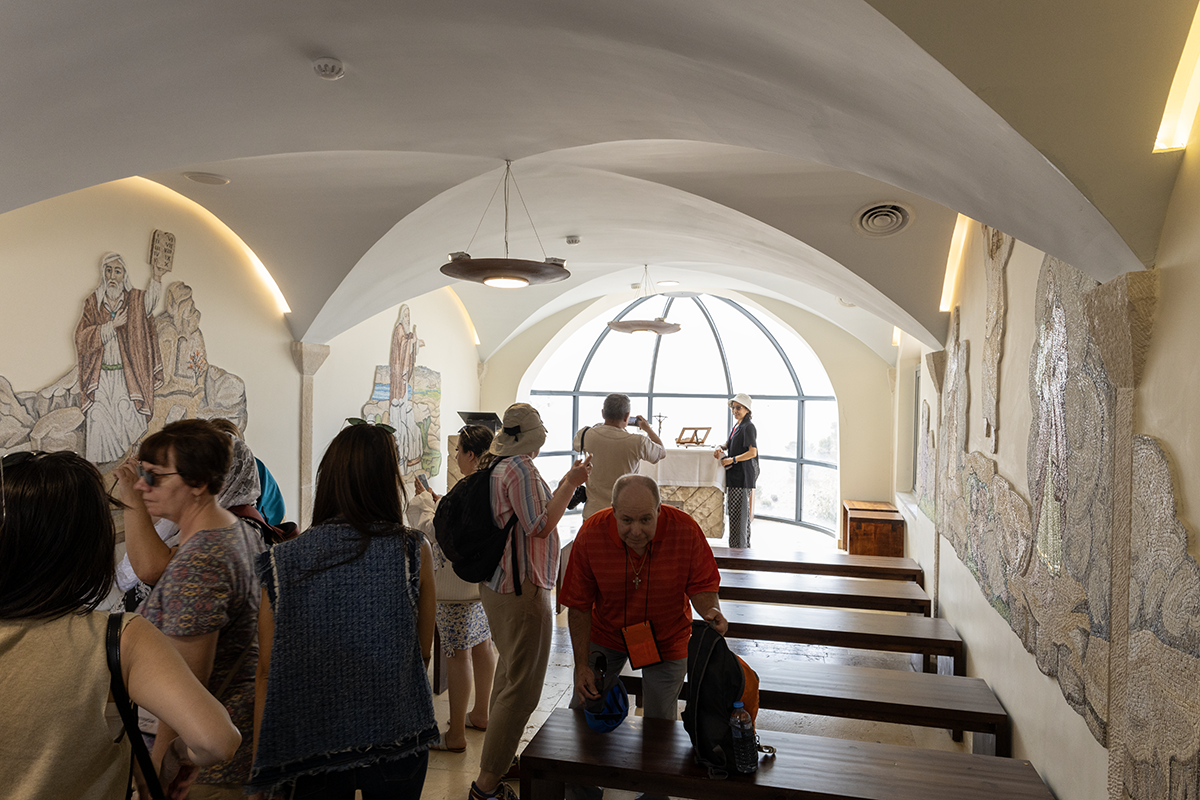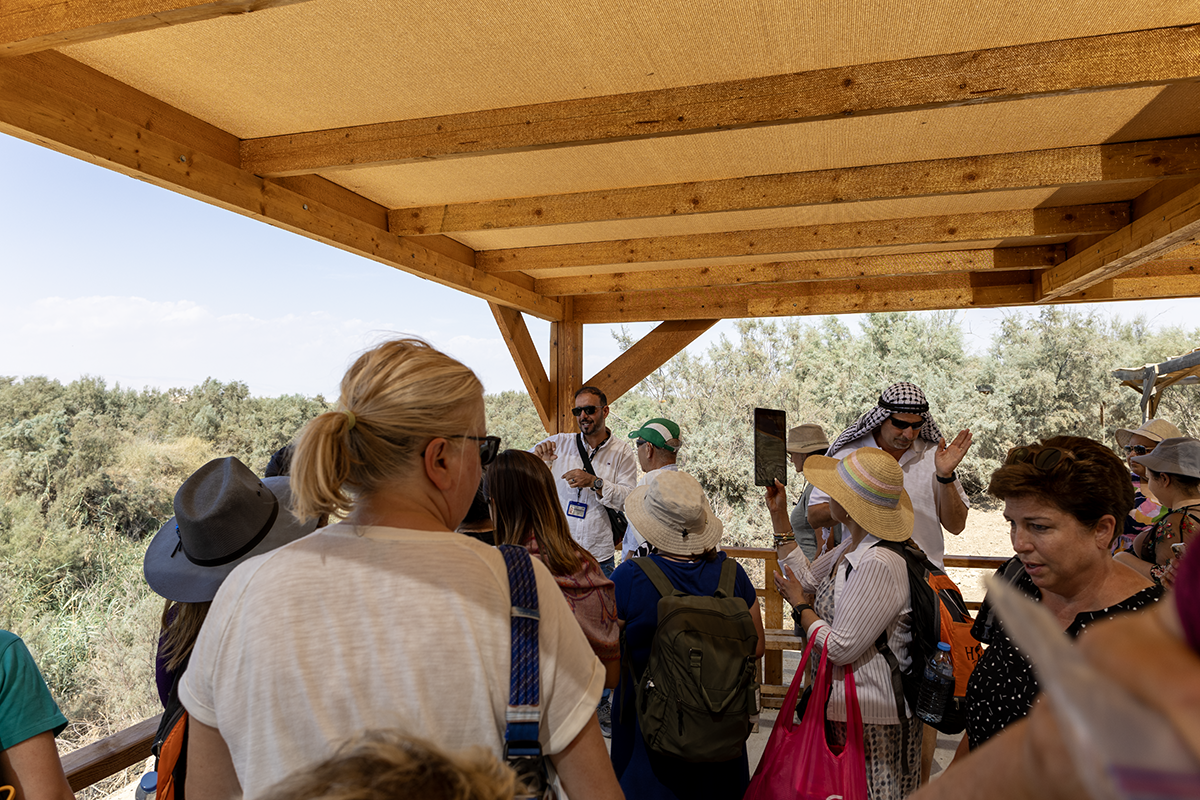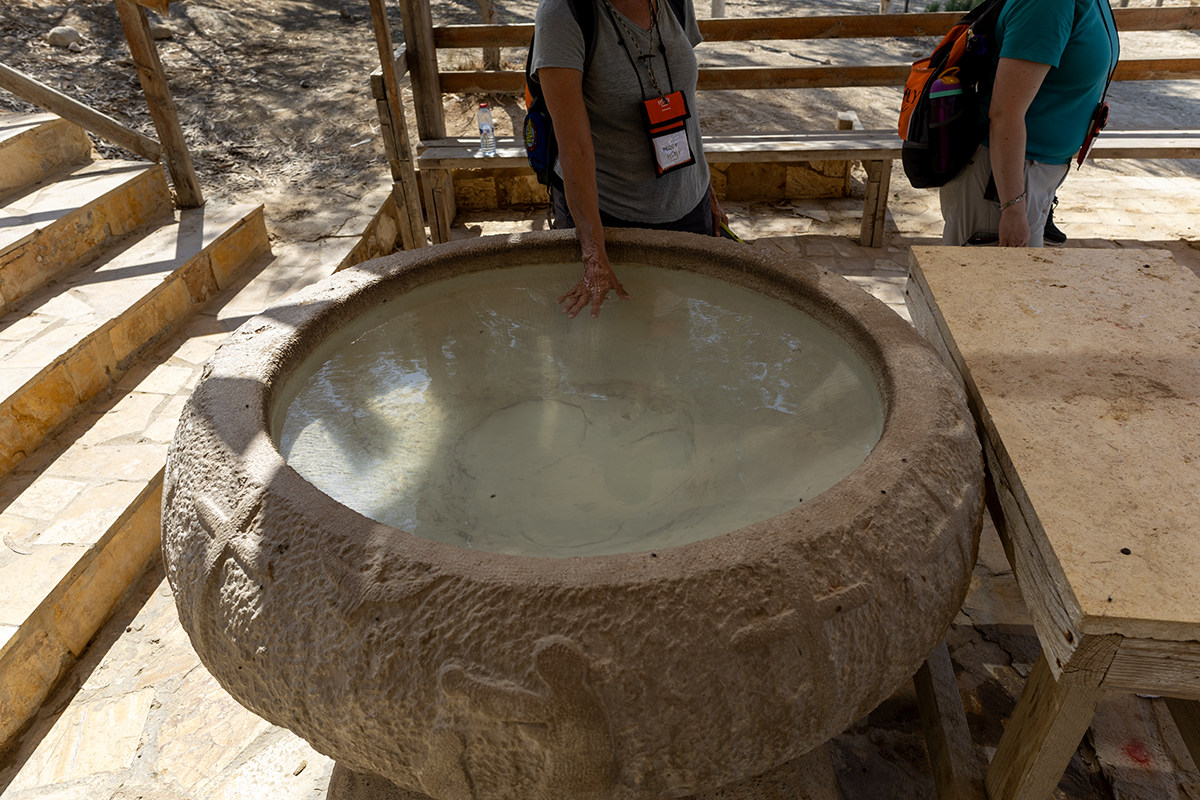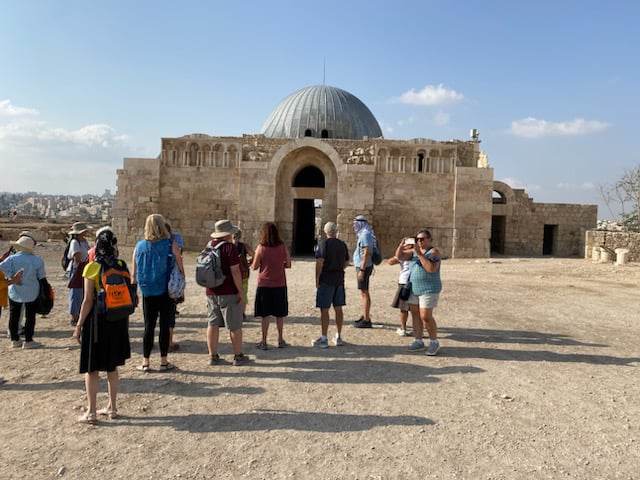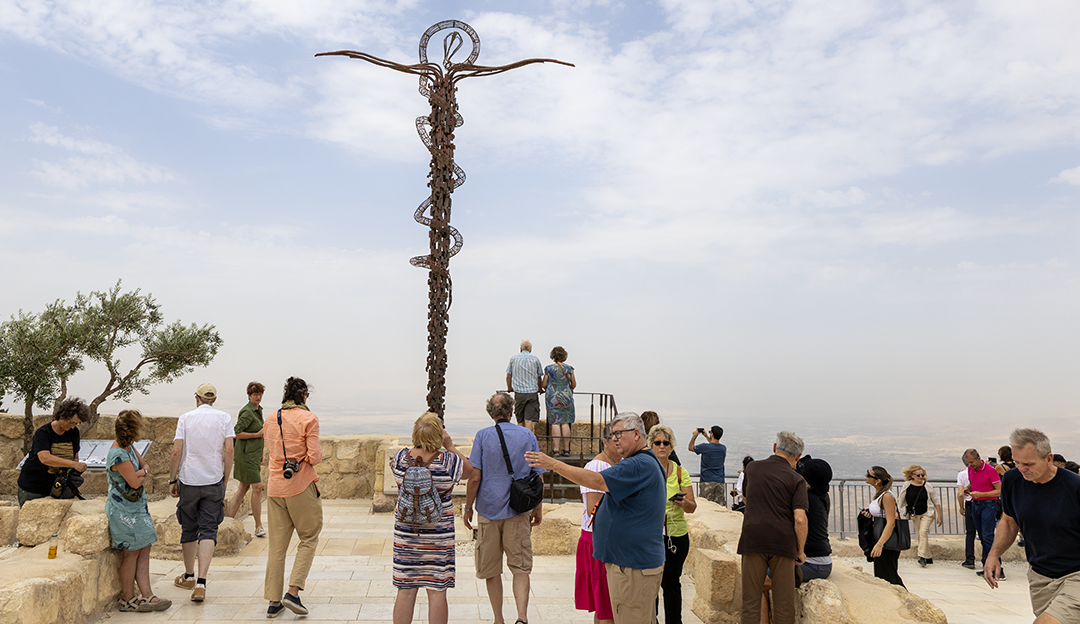
Parishioners from St. Mark and St. Mary parishes, Kenosha, were on a pilgrimage to the Holy Land when Hamas launched its Oct. 7 attack on Israel. After several fraught days, the 33 pilgrims were able to make it home safely. (Submitted photos)
For 33 Catholic pilgrims from Kenosha, the trip of a lifetime turned into something memorable for all of the wrong reasons.
Fr. Roman Stikel, Pastor of St. Mary Parish, Kenosha, was leading 31 parishioners from St. Mary and St. Mark Parish, Kenosha, along with Fr. Carlos Florez on a pilgrimage to the Holy Land when Hamas launched its Oct. 7 attack on Israel.
The pilgrims made it home Friday, Oct. 13, after several harrowing days.
Fr. Stikel said he is grateful to be home but can’t get those who were not as lucky out of his mind.
The group had arrived in Aman, Jordan, just two days prior.
“We flew from Chicago to Aman and took the bus to the desert in Jordan. The next day, we went to Petra, which was supposed to be at the end of the trip, but it got moved,” said Fr. Stikel. “Afterward, we went to our hotel in Aman, got on a bus and took the bus to the Jordanian-Israeli border, crossed the border, got on another bus, and went to Bethlehem on Friday night, Oct. 6. We arrived late — around 7:30 p.m. — had dinner and went to bed.”
The next day, Saturday, the group planned to go to Jerusalem. The pilgrims were in the parking lot when they began to hear the concussions from rockets.
“The tour guides told us not to worry because it happens all the time,” said Fr. Stikel. “Lilly, our tour guide, said the Palestinians make rockets in their kitchens and fire them, but they are not accurate. I heard more concussions and went outside. I looked up and saw contrails from the rockets. I knew these weren’t kitchen rockets.”
The group tried to get to Jerusalem, and the bus driver talked to others about traveling a different route. All the checkpoints were closed, and the group was unable to leave Bethlehem. All around them was smoke, people in the streets, and those who were honking the horns in their cars.
“We came back to the hotel, and in the afternoon, we went to visit the Church of the Nativity,” said Fr. Stikel. “After that, we came back to the hotel and didn’t do anything else. I began looking at cable TV and saw CNN and, for the first time, began to hear of the atrocities. I knew they were not kitchen rockets, but there was a lot more happening.”
The pilgrims sat in the hotel lobby and one by one they began getting text messages from family members telling them to get out of Israel now. Unfortunately, there was no way out. There was no airport in Bethlehem and no way to get out that day or the next day. They tried to make the best of it by touring an orphanage, and celebrating Mass, all while still hearing the concussions from the rockets.
“We made a stop for lunch and came back to our hotel and stayed here. The next day, we were still in Bethlehem as there was a general strike going on and everything was closed,” Fr. Stikel said.
On Monday, Oct. 9, the group planned to find a checkpoint to get through, but they visited several checkpoints and all were closed. Finally, they found an open one. A rather animated Israeli soldier came onto the bus to check passports, saying, “Welcome to Israel. I hope you enjoyed your stay and I hope you come back.”
The pilgrims drove north toward the Sea of Galilee as the tour operator figured they would be safe if they went that way.
“Our two tour guides were Palestinian Christians and drove by Jerusalem and Tel Aviv and arrived in Nazareth. They got off the bus for 10 minutes with the local guide and bus driver, when Fr. Carlos got a call and the person said to get out now. The U.S. Embassy and Israelian authorities said we needed to leave,” Fr. Stikel said. “We were in Nazareth for 10 minutes and drove back to the Jordanian border and stood there for a long time. There were tons of groups there from Japan, Australia, Poland, UK, Bolivia, as well as groups from the U.S.”
They were not allowed to pass through the border until they had a tour guide, and their two Palestinian Christian guides were not allowed to cross. Finally, early in the evening, a tour guide arrived with a bus, and they went through immigration and customs, and made it back to Jordan.
“If we had not gotten out of Nazareth when we did, I don’t think we’d be having this conversation,” Fr. Stikel said. “There was so much going on and so quickly. I can’t help but think about those who were not able to get out. We had a young lady who joined us. Her name was Halina; she was there with a group of 26, and she had made it out of Israel, but the other 25 didn’t. I don’t know if they made it out or what happened. I pray they did.”
While in Jordan, the tour operator gave the group a couple of trips while they were there. They visited the ruins in Jerash, visited the Jordan River and the Dead Sea —it was on the Jordanian side, and not the Israeli side. The pilgrims were able to fulfill about a quarter of their itinerary.
Throughout their ordeal, Fr. Stikel kept worried family and friends apprised of their situation with daily robocalls, thanking them for their prayers. The updates were posted on the parish’s Facebook page.
As to whether he would attempt a return trip, Fr. Stikel quickly replied yes, but as for his fellow pilgrims, ranging in age from 40 to 65, he isn’t too certain.
“I couldn’t say if some would go again; it was quite frightening for some. We were all concerned we wouldn’t make it home, but grateful we did,” he said. “I think some of the more adventurous ones would try again.”

